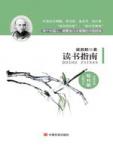Chapter 1 foreword
The ancient classics of our country are numerous and difficult. For contemporary youths who do not have a solid foundation in Chinese studies, although they may have the enthusiasm to read them all, they lack the ability to choose and judge, and they are at a loss as to where to start.This book is a collection of the main works of Mr. Liang Qichao, a master of his generation, to guide young people to learn Chinese studies.
The late Qing Dynasty and the Republic of China were the golden age when the eastern and western cultures collided, the old and the new alternated, and the humanities and academics flourished. A group of master scholars produced a group of master scholars, left us a rich cultural heritage, and built a bridge connecting ancient and modern China and foreign countries. Mr. Liang Qichao It is one of the important ones.His life straddled the two fields of politics and academia, and he left behind brilliant achievements.In his early years, he wrote many inspiring and appealing political articles with a strong pen, becoming "the most appealing political commentator" and "the whole country tends to follow it, like drinking a spring of madness"; Wei, Chen Yinke, and Zhao Yuanren are listed as the four mentors of Tsinghua Academy of Chinese Studies, and they have written a lot.
In the spring of the twelfth year of the Republic of China (1923), a reporter from "Tsinghua Weekly" asked Mr. Liang Qichao for a manuscript. In late April, Mr. Liang Qichao spent three days writing the article "The Essentials of Introduction to Chinese Studies and How to Read It" and published it in On the "Book and Newspaper Introduction Supplement" of the journal.This article introduces ancient Chinese classics, and explains the characteristics of each book and how to read them in a simple way.
In the autumn of the same year, Mr. Liang Qichao taught the "Summary of Group Books" course at Tsinghua University.The speech was originally published in the "Book and Newspaper Introduction Supplement" of "Tsinghua Weekly" in separate periodicals, and was later published by Tsinghua Weekly Series in December of the 14th year of the Republic of China (1925).This book provides a systematic, well-organized, and focused introduction to the most basic Chinese classics. The advantages and disadvantages and other related issues are all clarified, and outsiders can get practical and effective guidance here.It is said that "Explanations of Key Books and Their Reading Methods" had already been "requested and copied everywhere" before the publication of the booklet, and it was very popular among young students; illustrates its value.
This time, the collection of "Introduction to Chinese Studies and How to Read it" and "Key Books and Answers to Questions and How to Read It" will be published for readers. Here, a generation of masters of Chinese studies rely on their personal reading experience to guide future students to understand and learn traditional classics It is still an important inspiration and guidance for us today.

